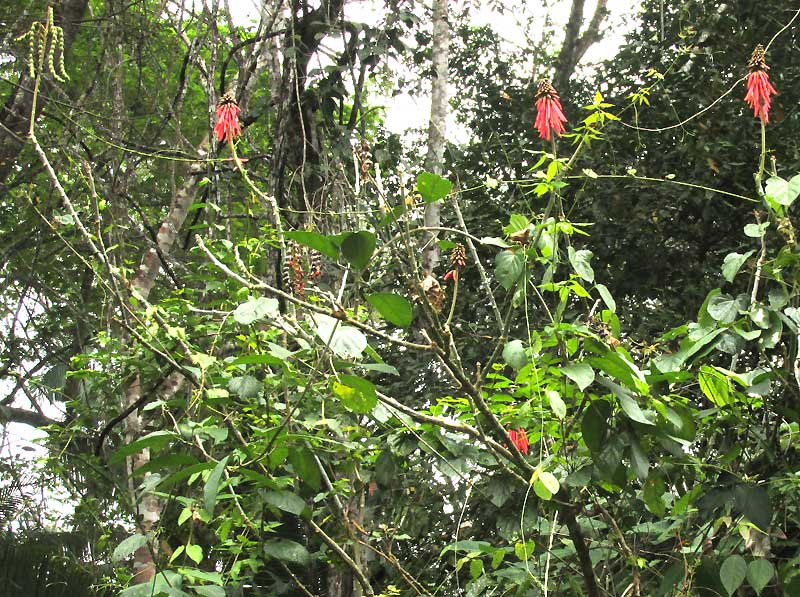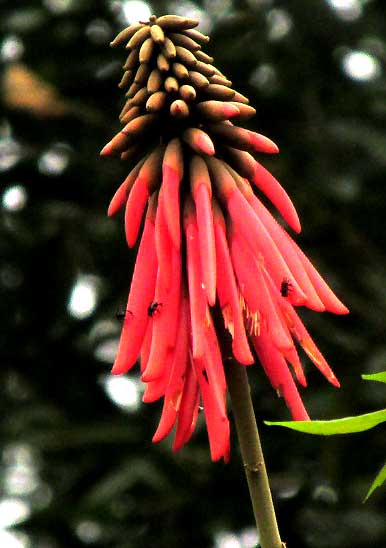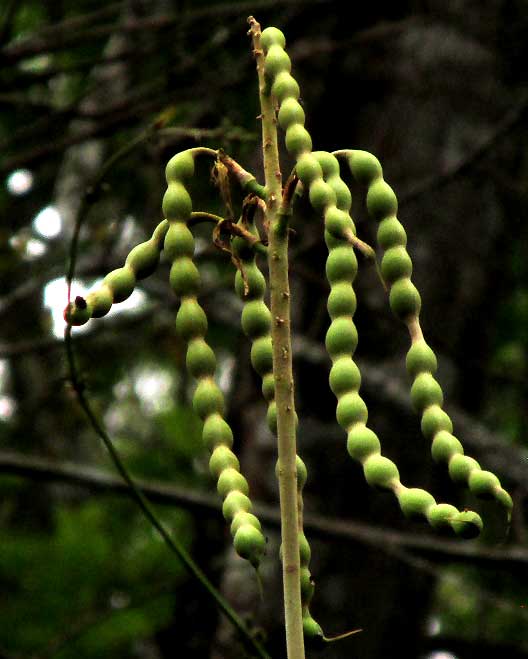Excerpts from Jim Conrad's
Naturalist Newsletter
Notes from an April 1, 2019 camping trip in Seibal Archaeological Park about 15kms east of Sayaxché, Petén department; tropical rainforest, elevation ~220m (~720 ft), ~N16.492°, W90.209° northern GUATEMALA
CORAL TREE
Hiking the little gravel road from the ruin complex to the park's southern boundary at Paraiso, at the edge of the forest I saw the small tree shown below:

I was unable to get close, but even from the road the tree's distinctive flower clusters and bead-like legumes (legumes at the picture's top, left) announced that here we had one of the hundred or so species of the distinctive, often encountered genus Erythrina, of the huge Bean Family. The manner by which the long, slender, normally red blossoms nod downward from upward growing branch tips is a main field mark for the genus, a closer look at an inflorescence shown below:

Another important field mark to note is how the calyxes are especially tightly crammed together at branch tips, and are velvety with a dense covering of short, brown hairs. Notice the bees on the flowers. Up close you find them less involved entering the blossoms to pollinate than in chewing on them (humans eat them, too), as seen below:

The legumes were immature, but still they displayed the beadlike form typical of Erythrina, shown below:

The 1946 treatment of the Bean Family of Guatemala by Paul Standley and Julian Steyermark (Fieldiana: Botany, vol. 24, part V) lists nine Erythrina species for Guatemala. Of these, the above features and others reveal that here we have ERYTHRINA FOLKERSII, endemic just to southern Mexico, Belize, Guatemala and part of Honduras. Its habitat is described as moist or wet thickets below 350m (1100feet), which is exactly where our trees were.